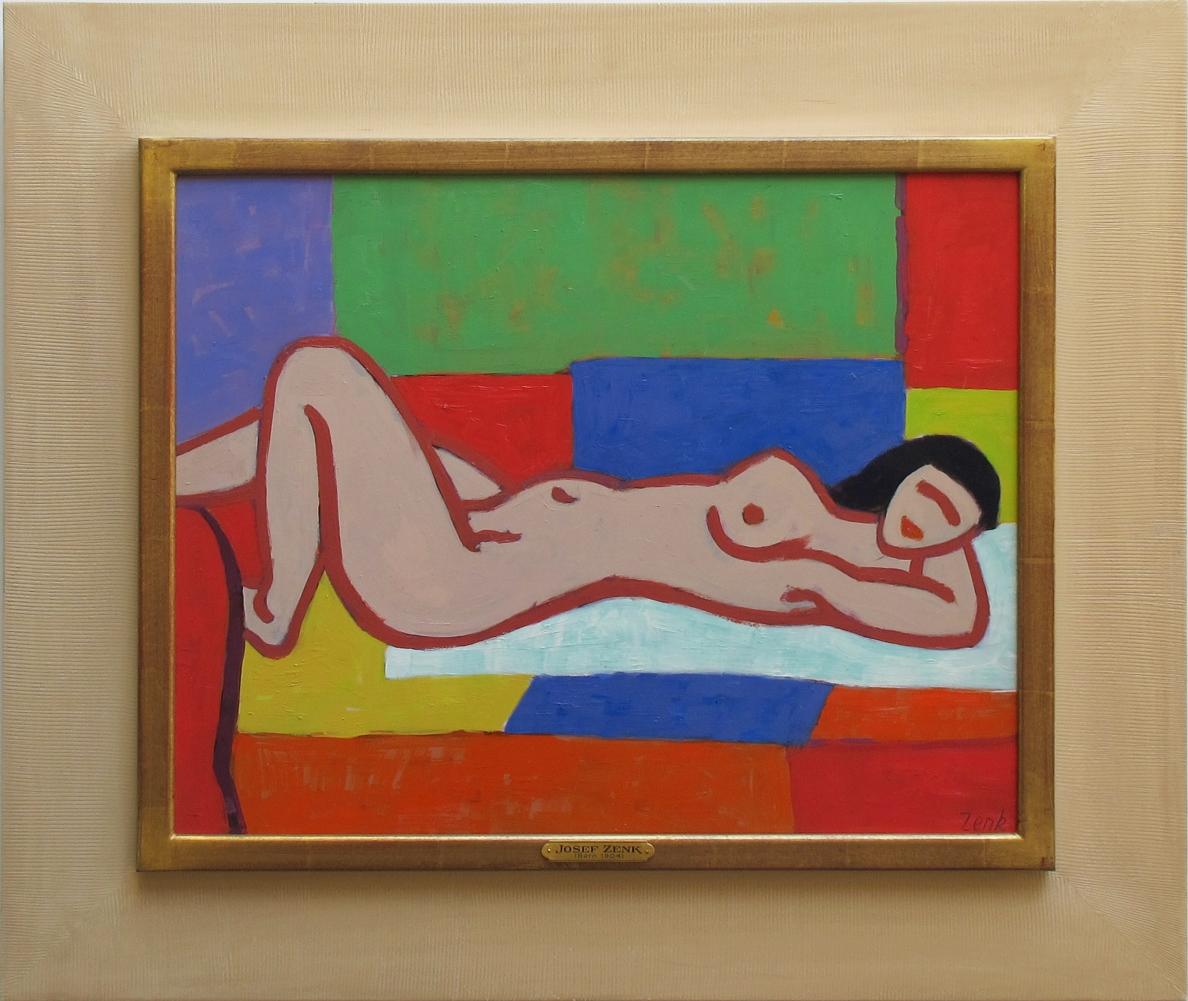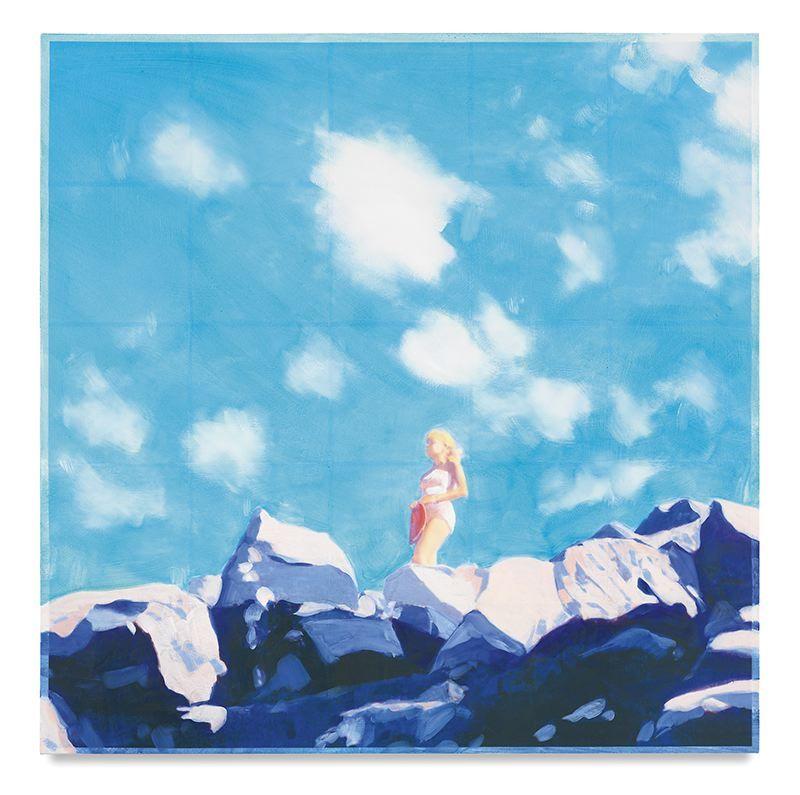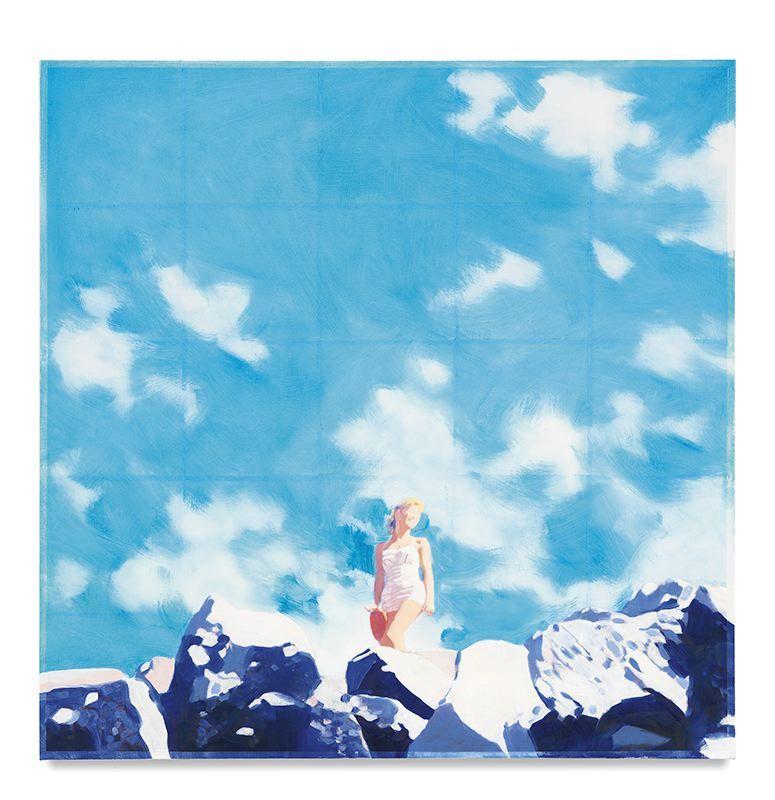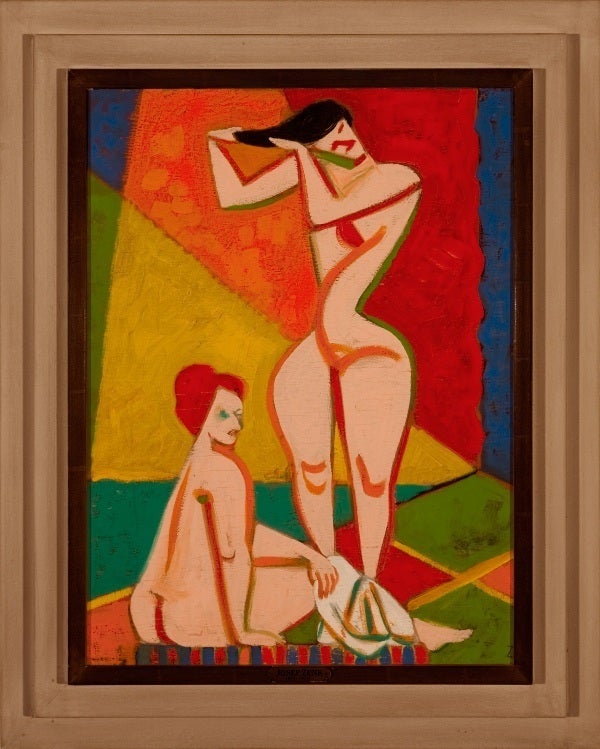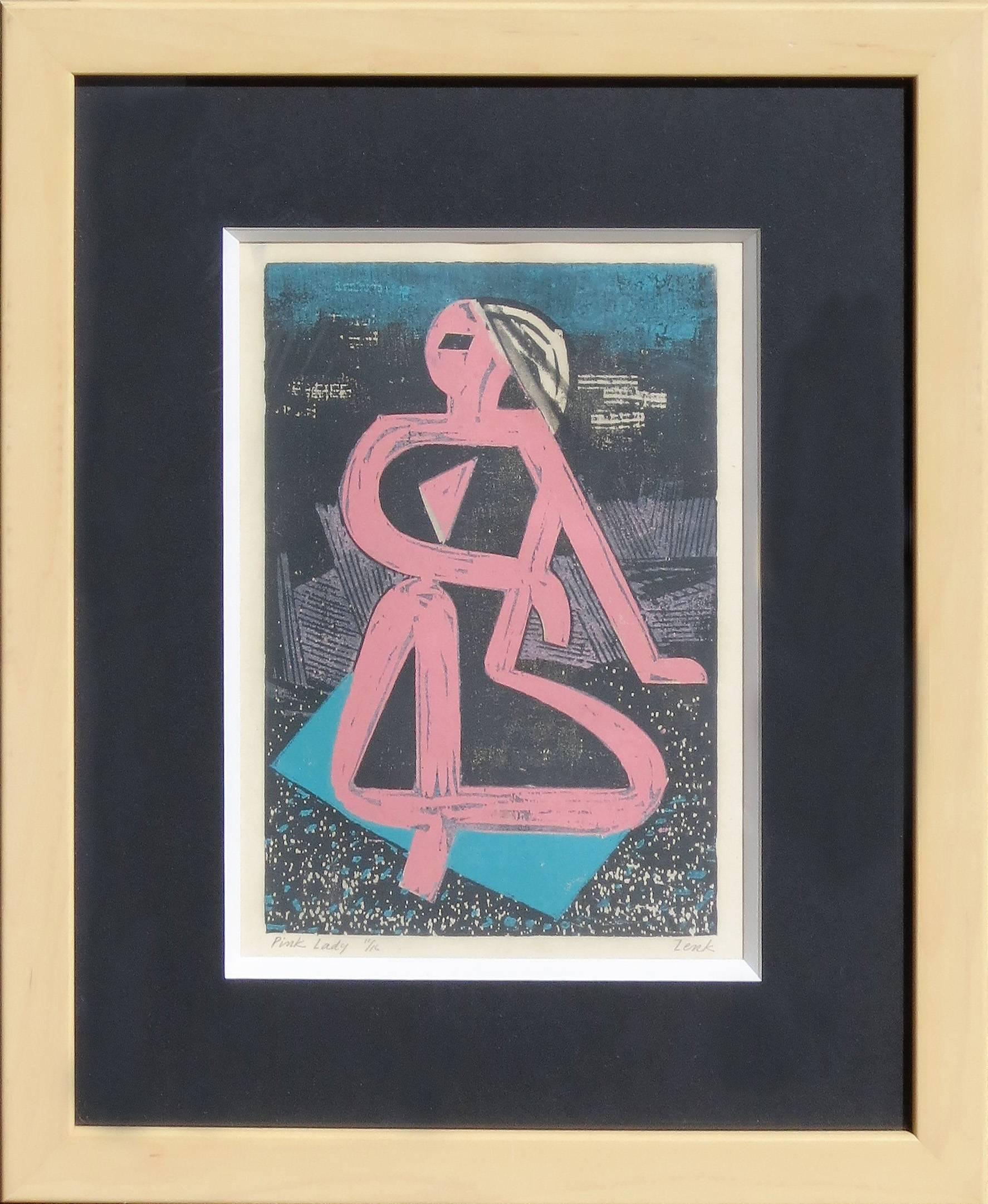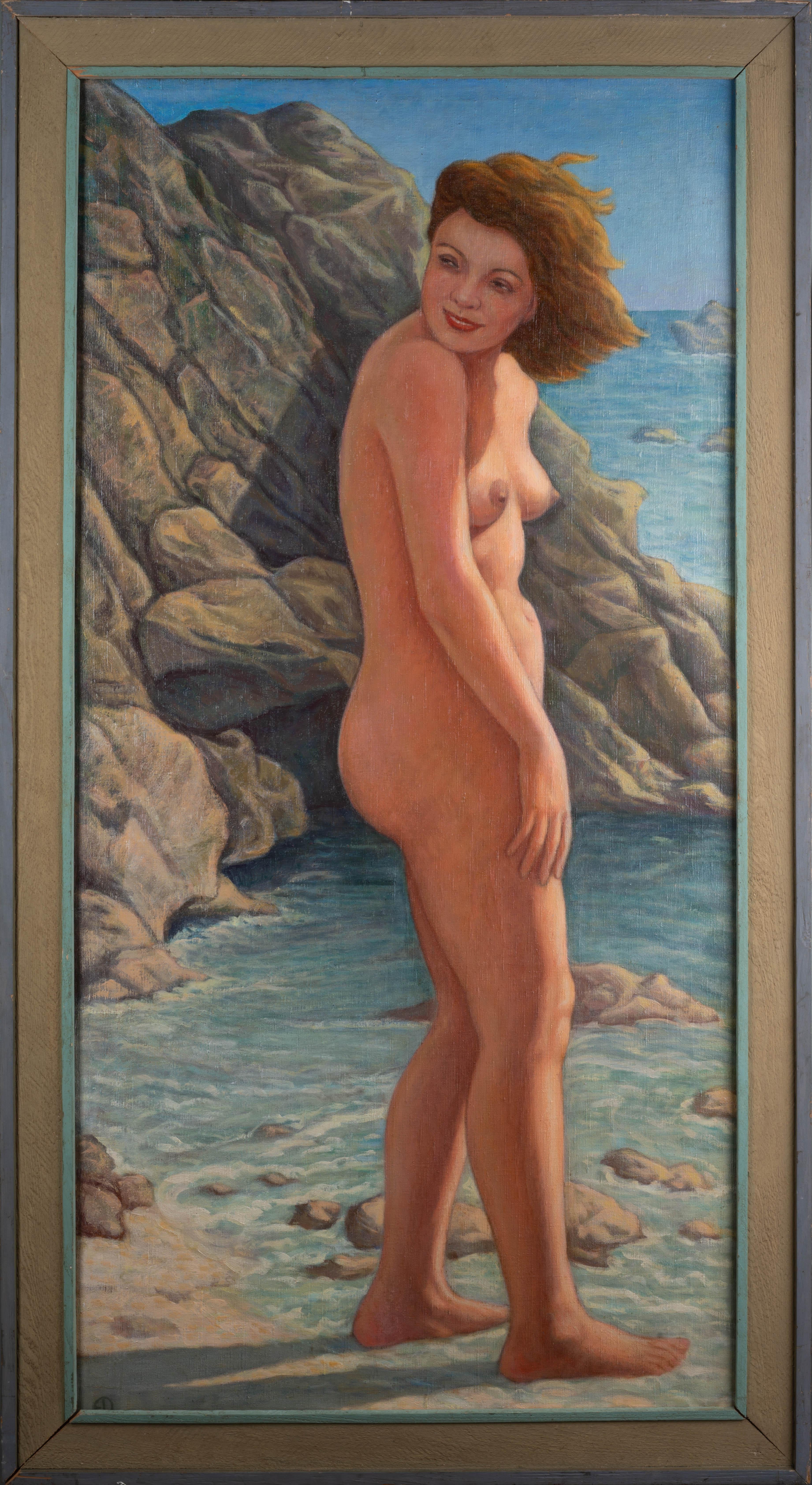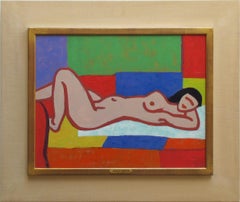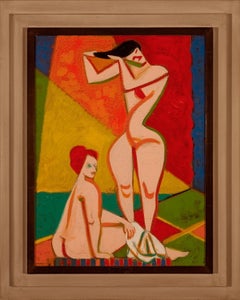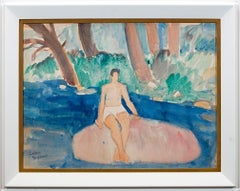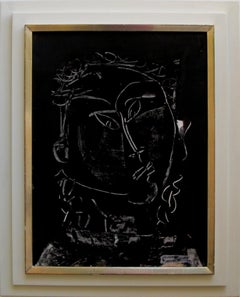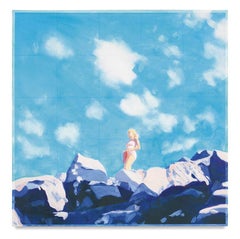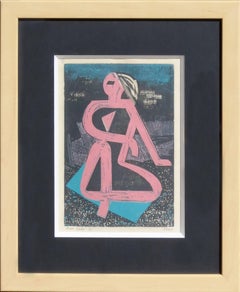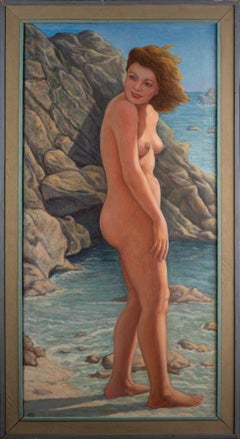Want more images or videos?
Request additional images or videos from the seller
1 of 7
Josef Zenk“Woman on the Rocks”
$18,125
£13,888.33
€15,974.83
CA$25,912.17
A$28,145.31
CHF 14,900.59
MX$339,837.23
NOK 186,018.73
SEK 176,223.20
DKK 119,282.70
About the Item
Jim’s of Lambertville is proud to offer this artwork by:
Josef Zenk (1904-2000)
Josef Zenk was born in New York City in 1904. After graduating from high school, he studied for three years at the National Academy of Design, followed by further studies at the Art Students League in New York.
In 1926, Zenk moved to Utica, New York, where we he began to produce landscape, figurative, and still life paintings. He was part of a small community of artists who, in 1927 and 1928, organized exhibitions with many of the leading American painters, including Edward Hopper, Charles Sheeler, and Ernest Fiene. In 1930 he was granted a full scholarship to study at the Munson Williams Proctor Institute in Utica, where he later became an instructor until World War II. While there, an exhibition of his work produced the greatest attendance of any show at the institution of that year. In 1942, “Zuni” by Zenk became the first work purchased by the Munson Williams Proctor Institute for its Central New York Artists Collection.
After service in the Armed Forces from 1942 to 1945, Zenk left Utica and moved his studio to Palisades Park, New Jersey. Under the new G.I. Bill, he began to study at the New School in New York City. Along with Louis Schanker, a prominent woodcut artist and teacher at the New School, Zenk and a small group of printmakers formed “Studio 74” for the purpose of exhibiting their color woodblock prints. The group received immediate critical attention. The New York Times described the work of Josef Zenk as “particularly admirable”. One of his prints, “The Kiss”, was chosen in 1949 as one of the “best prints of the year” and was exhibited in the National Exhibition of Prints held at the Library of Congress in Washington D.C.
Zenk moved to Bucks County, Pennsylvania in the late 1940s, living in Upper Black Eddy, a town along the Delaware River, ten miles north of New Hope. He maintained a studio in Palisades Park for a while after the move, before eventually working full time from his studio in Pennsylvania. Zenk remained active painting and making woodblock prints, while also teaching art classes. He resided in Bucks County until the end of his life at the age of ninety-six.
Like several other important Pennsylvania and New Jersey artists, the works of Josef Zenk were only recently rediscovered and brought to light. For the remaining thirty-five years of his life, he chose a somewhat reclusive lifestyle, away from the frenetic art scene.
Josef Zenk’s works have been shown in over twenty-seven museums, including the San Francisco Museum of Art, the Brooklyn Museum, the Newark Museum, the Seattle Museum of Art, and the National Academy of Design. Through the many exhibitions during his career, Zenk progressed from stylized realism in landscape and figurative painting to a powerful modernist and abstract style with a strong sense of personal expression.
Source: New Hope for American Art, James Alterman
- Creator:
- Dimensions:Height: 28 in (71.12 cm)Width: 24 in (60.96 cm)Depth: 2 in (5.08 cm)
- More Editions & Sizes:Framed Size 28" x 24"Price: $18,125
- Medium:
- Movement & Style:
- Period:
- Condition:
- Gallery Location:Lambertville, NJ
- Reference Number:Seller: 2311stDibs: LU3745420902
About the Seller
5.0
Vetted Professional Seller
Every seller passes strict standards for authenticity and reliability
Established in 1997
1stDibs seller since 2014
39 sales on 1stDibs
Typical response time: 1 to 2 days
- ShippingRetrieving quote...Shipping from: Lambertville, NJ
- Return Policy
Authenticity Guarantee
In the unlikely event there’s an issue with an item’s authenticity, contact us within 1 year for a full refund. DetailsMoney-Back Guarantee
If your item is not as described, is damaged in transit, or does not arrive, contact us within 7 days for a full refund. Details24-Hour Cancellation
You have a 24-hour grace period in which to reconsider your purchase, with no questions asked.Vetted Professional Sellers
Our world-class sellers must adhere to strict standards for service and quality, maintaining the integrity of our listings.Price-Match Guarantee
If you find that a seller listed the same item for a lower price elsewhere, we’ll match it.Trusted Global Delivery
Our best-in-class carrier network provides specialized shipping options worldwide, including custom delivery.More From This Seller
View All"Woman on the Couch"
By Josef Zenk
Located in Lambertville, NJ
Jim’s of Lambertville is proud to offer this artwork by:
Josef Zenk (1904-2000)
Josef Zenk was born in New York City in 1904. After graduating from high school, he studied for thre...
Category
20th Century Modern Nude Paintings
Materials
Masonite, Oil
Figures
By Josef Zenk
Located in Lambertville, NJ
Jim’s of Lambertville is proud to offer this artwork by:
Josef Zenk (1904-2000)
Josef Zenk was born in New York City in 1904. After graduating from high school, he studied for thre...
Category
21st Century and Contemporary Abstract Nude Paintings
Materials
Oil, Board
$20,625
"The Bather"
By Gershon Benjamin
Located in Lambertville, NJ
Jim's of Lambertville Fine Art Gallery is proud to present this piece by Gershon Benjamin (1899 – 1985).
An American Modernist of portraits, landscapes, still lifes, and urban scene...
Category
1950s Figurative Drawings and Watercolors
Materials
Paper, Watercolor, Gouache
“Woman in Black”
By Vaclav Vytlacil
Located in Lambertville, NJ
Jim’s of Lambertville is proud to offer this artwork by:
Vaclav Vytlacil (1892-1984)
He was born to Czechoslovakian parents in 1892 in New York City. Living in Chicago as a youth, he took classes at the School of the Art Institute of Chicago, returning to New York when he was 20. From 1913 to 1916, he enjoyed a scholarship from the Art Students League, and worked with John C. Johansen (a portraitist whose expressive style resembled that of John Singer Sargent), and Anders Zorn.
He accepted a teaching position at the Minneapolis School of Art in 1916, remaining there until 1921. This enabled him to travel to Europe to study Cézanne’s paintings and works of the Old Masters. He traveled to Paris, Prague, Dresden, Berlin, and Munich seeking the works of Titian, Cranach, Rembrandt, Veronese, and Holbein, which gave him new perspective. Vytlacil studied at the Royal Academy of Art in Munich, settling there in 1921. Fellow students were Ernest Thurn and Worth Ryder, who introduced him to famous abstractionist Hans Hofmann. He worked with Hofmann from about 1922 to 1926, as a student and teaching assistant.
During the summer of 1928, after returning to the United States, Vytlacil gave lectures at the University of California, Berkeley, on modern European art. Soon thereafter, he became a member of the Art Students League faculty. After one year, he returned to Europe and successfully persuaded Hofmann to teach at the League as well. He spent about six years in Europe, studying the works of Matisse, Picasso, and Dufy. In 1935, he returned to New York and became a co-founder of the American Abstract Artists group in 1936. He later had teaching posts at Queens College in New York; the College of Arts and Crafts in Oakland, California; Black Mountain College in North Carolina; and the Art Students League.
His paintings exhibit a clear inclination toward modernism. His still lives and interiors from the 1920s indicate an understanding of the art of Cézanne. In the 1930s, his works displayed two very different kinds of art at the same time. His cityscapes and landscapes combine Cubist-inspired spatial concerns with an expressionistic approach to line and color. Vytlacil also used old wood, metal, cork, and string in constructions, influenced by his friend and former student, Rupert Turnbull. He eventually ceased creating constructions as he considered them too limiting. The spatial challenges of painting were still his preference. During the 1940s and 1950s, his works indicated a sense of spontaneity not felt in his earlier work.
He married Elizabeth Foster in Florence, Italy, in 1927 and they lived and worked in Positano, Italy for extended periods of time. Later on, they divided their time between homes in Sparkill, New York and Chilmark, Massachusetts, where Vyt, as he was affectionately called, taught at the Martha's Vineyard Art...
Category
1960s Abstract Expressionist Figurative Paintings
Materials
Oil, Board
"After the Bath"
By Gershon Benjamin
Located in Lambertville, NJ
Jim’s of Lambertville is proud to offer this artwork by:
Gershon Benjamin (1899-1985)
An American Modernist of portraits, landscapes, still lives, and the urban scene, Gershon Ben...
Category
1940s Modern Figurative Drawings and Watercolors
Materials
Pastel
"The Model"
By Gershon Benjamin
Located in Lambertville, NJ
Jim’s of Lambertville is proud to offer this artwork by:
Gershon Benjamin (1899-1985)
An American Modernist of portraits, landscapes, still lives, and the urban scene, Gershon Benj...
Category
1910s Modern Nude Drawings and Watercolors
Materials
Paper, Graphite
You May Also Like
Woman on the Rocks II
By Isca Greenfield-Sanders
Located in New York, NY
Isca Greenfield-Sanders
Woman on the Rocks II, 2016
Mixed media oil on canvas
35 x 35 inches
88.9 x 88.9 cm
Signed, titled and dated (verso)
--
Greenfield-Sanders’ landscape paintings invite the viewer into nostalgia, to forge a connection to their own experience. Using found vintage photography as a starting point, she creates several iterations of each image, which she alters with pencil and watercolor, and finally paints over with oil. They emerge simultaneously familiar yet enigmatic. She elaborates, stating, “All of my paintings are based on amateur slides from seventy years ago. I am interested in the ‘comfortably familiar’ nature of the images and how the elapsed time allows them to ‘prickle with new meaning’ to connect that which was worth capturing with that which is worth painting, at present.” The paintings require a great deal of forethought and groundwork, but still appear unlabored and fresh. Her style of painting, which prizes color, representation and evocation, is activated by both individual experience and collective memory.
Isca Greenfield-Sanders (b. in 1978 in New York City) received her dual BFA and BA degree from Brown University. The artist lives and works in New York, NY.
Recent solo exhibitions include “The Things I Can’t Forget,” Miles McEnery Gallery, New York, NY; “Ocean Eyes of Blue,” Michael Reid...
Category
2010s Figurative Paintings
Materials
Mixed Media
Price Upon Request
Woman on the Rocks I
By Isca Greenfield-Sanders
Located in New York, NY
Isca Greenfield-Sanders
Woman on the Rocks I, 2016
Mixed media oil on canvas
35 x 35 inches
88.9 x 88.9 cm
Signed, titled and dated (verso)
--
Greenfield-Sanders’ landscape paintings invite the viewer into nostalgia, to forge a connection to their own experience. Using found vintage photography as a starting point, she creates several iterations of each image, which she alters with pencil and watercolor, and finally paints over with oil. They emerge simultaneously familiar yet enigmatic. She elaborates, stating, “All of my paintings are based on amateur slides from seventy years ago. I am interested in the ‘comfortably familiar’ nature of the images and how the elapsed time allows them to ‘prickle with new meaning’ to connect that which was worth capturing with that which is worth painting, at present.” The paintings require a great deal of forethought and groundwork, but still appear unlabored and fresh. Her style of painting, which prizes color, representation and evocation, is activated by both individual experience and collective memory.
Isca Greenfield-Sanders (b. in 1978 in New York City) received her dual BFA and BA degree from Brown University. The artist lives and works in New York, NY.
Recent solo exhibitions include “The Things I Can’t Forget,” Miles McEnery Gallery, New York, NY; “Ocean Eyes of Blue,” Michael Reid...
Category
2010s Figurative Paintings
Materials
Mixed Media
Price Upon Request
"Pink Lady"
By Josef Zenk
Located in Lambertville, NJ
Signed Lower Right
Titled and Numbered Lower Left
Josef Zenk (1904-2000)
Josef Zenk was born in New York City in 1904. After graduating from high school he studied for three years...
Category
20th Century Abstract Figurative Prints
Materials
Paper, Color
$7,000
Nude in the rocks
Located in PARIS, FR
Edouard Dumoulin
Nude in the rocks
Oil on canvas
131 x 66 cm (144 x 79 cm with frame)
No signature. Issued from same collection of te artist's works
Category
1930s Nude Paintings
Materials
Canvas, Oil
Figure Holding a Box Sat on The Mountain Rocks Original French Artwork
By Robert Ladou
Located in Cirencester, Gloucestershire
Original French Artwork
by Robert Ladou (French 1929-2014)
original gouache painting on artist paper, unframed
size: 13 x 15.5 inches
condition: very good
provenance: from the artis...
Category
20th Century Figurative Paintings
Materials
Gouache
Nude Free Woman in a Rocky Mountain Landscape by Shirl Goedike
Located in Pasadena, CA
The painting reveals a nude woman, her aura exuding self-assurance. She stands upright on the rugged terrain of a rocky mountain. The work is elegant, devoid of any hint of eroticism...
Category
Late 20th Century Barbizon School Figurative Paintings
Materials
Canvas, Oil
$1,500 Sale Price
48% Off
More Ways To Browse
Color Woodblock Prints
Oil Paintings Of Rocks
Old Master Mother Child
Olle Hjortzberg
Paintings Of Celebrities
Park Bench Oil Painting
Pater Paintings
People On Beach Paintings
Picot Painting
Pierrot And Harlequin
Playing Marbles
Prada Painting
Pulp Illustration
Raggedy Ann Doll
Red Riding Hood Painting
Restaurant Scenes Oil Paintings
Rolls Royce Painting
Royal Board Paintings
